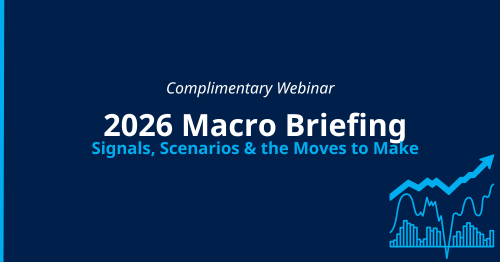


It’s one thing to scale up a financial technology business in one country; it’s quite another to simultaneously scale it in another country with markedly different kinds of processes, distribution strategies and overall market nuances.
Miles Schwartz is doing just that, with Zūm Rails, a Montreal-based fintech that he co-founded with Marc Milewski that combines payments, open banking and banking-as-a-service into one portal for businesses.
Schwartz shares the company’s strategy for success in both Canada and the U.S.
We scaled the Canadian business first and after scaling the Canadian business into the eight figures of ARR in Canada, we put our focus on scaling the U.S. while simultaneously continuing to grow our Canadian operations.
Starting and scaling the business in the U.S. is a similar experience to launching an entirely new business, since the way the U.S. works is entirely different from Canada. The main advantage we had was that we were able to launch in the U.S. with some of our existing client and partner relationships from Canada.
In order to build out the right team and process for the U.S., the first step was for my co-founder, Marc Milewski, and I to learn the lay of the land as it related to running our business. Since we help businesses process payments, we needed to learn about the banks, standard processes, the software partners, risk tolerance and more in an entirely new market.
Establishing and scaling the U.S. has been the main focus for Marc and me, since in Canada we have the infrastructure and maturity for the business to run fairly autonomously—whereas the U.S. needs all hands-on deck and scrappiness to get off the ground.
Now that Marc and I built the banking relationships, and we have established software vendor partnerships in the U.S., we have a deep understanding of the market and are able to scale the U.S. teams. Since we are now over the initial learning curve and trial and error, we can now properly grow and train our team.
Distribution is critical as it allows for predictability of revenue. You can have the best product but if you do not have the proper distribution it won’t matter. Distribution strategy will ultimately vary for every type of business. For some businesses, it may make sense to go direct to the consumer but for others, distribution through partners can make more sense.
Since we are in the financial technology space, helping businesses overcome their payment pain points, the distribution strategy that worked for us was spearheading partnerships with strategic software companies—we sell to one and they sell to many.
Examples of these software partners we work with are property management software companies, loan management software companies and more, in which one loan management company could have 80 lenders that use their software.
Through our early-stage U.S. software partners alone we have over 100 U.S. clients. Without these distribution partners, it would have taken years and a large sales army to obtain these 100-plus U.S. clients.
We also have direct relationships with several businesses, particularly in the large enterprise space where it makes sense to go directly.
Understanding the different market nuances is critical. There will be a different learning curve for each type of business that spans not only differences in business operations but also cultural and work pace as well.
Having a finger on these nuances between two different markets is key to not only building out business operations and a team but also identifying product-to-market fit and engaging with prospects and clients. The ability to understand these nuances, and navigating them successfully, is ultimately what sets apart a market expansion that fosters continued growth.
In our experience, everything in the U.S. market is different from Canada from the banks, the rails, the regulatory and compliance requirements and more that are all critical to offering our core products and services to customers.
There are more than 15,000 financial institutions in the U.S., whereas in Canada there are five big banks. Additionally, the banks in the U.S. all offer different technology and are competing for our business. Selecting the right banking partner for our business needs and client use cases was a very difficult task as we were learning on the fly and attending conferences to form these relationships from scratch.
Even on the partnership front, we encountered way more providers in the U.S. market solving problems for every niche, whereas in Canada if you can solve a niche problem there is barely any competition.
The deeper your understanding of the market is, the more traction you gain. Understanding the market allows the business to have the knowledge to inform strategic product decisions that will ultimately lead to sustained growth.
Figure out what your superpower is and what you do best and try to get exponentially better at that and surround yourself with others who make up for your weaknesses.
Also be irrationally optimistic because building a company is the most challenging thing you can do and if you don’t fully believe in yourself and the startup nobody else will.
Mentally I’m always living two years in the future—where I want to be—since I believe that’s the only way to make it a reality. When you really believe, act and are mentally where you want to be, it makes the process of getting there way more achievable and the belief and positivity is contagious.
If you want to carve your own path, you have to really know yourself and always look at ways to improve and always evolve. If I was the same person I was last year, I would fail. The goal is to constantly be learning and evolving.
There is so much information on the internet, including YouTube. Find online mentors that resonate with you and constantly keep learning from people who have done it before you—anything from the business, psychology, economics, to the field you are pursuing. The goal is to always be a student and to constantly keep evolving and growing.
The last piece of advice I would give is to be authentic and bold. When you are going after something you really want and want to carve your own path, you need to stand out. Trying to fit in or do the proper things is not the way to do it. You have to be authentic, bold and take risks and stand out.




0

1:00 - 5:00 pm
Over 70% of Executives Surveyed Agree: Many Strategic Planning Efforts Lack Systematic Approach Tips for Enhancing Your Strategic Planning Process
Executives expressed frustration with their current strategic planning process. Issues include:
Steve Rutan and Denise Harrison have put together an afternoon workshop that will provide the tools you need to address these concerns. They have worked with hundreds of executives to develop a systematic approach that will enable your team to make better decisions during strategic planning. Steve and Denise will walk you through exercises for prioritizing your lists and steps that will reset and reinvigorate your process. This will be a hands-on workshop that will enable you to think about your business as you use the tools that are being presented. If you are ready for a Strategic Planning tune-up, select this workshop in your registration form. The additional fee of $695 will be added to your total.

2:00 - 5:00 pm
Female leaders face the same issues all leaders do, but they often face additional challenges too. In this peer session, we will facilitate a discussion of best practices and how to overcome common barriers to help women leaders be more effective within and outside their organizations.
Limited space available.

10:30 - 5:00 pm
General’s Retreat at Hermitage Golf Course
Sponsored by UBS
General’s Retreat, built in 1986 with architect Gary Roger Baird, has been voted the “Best Golf Course in Nashville” and is a “must play” when visiting the Nashville, Tennessee area. With the beautiful setting along the Cumberland River, golfers of all capabilities will thoroughly enjoy the golf, scenery and hospitality.
The golf outing fee includes transportation to and from the hotel, greens/cart fees, use of practice facilities, and boxed lunch. The bus will leave the hotel at 10:30 am for a noon shotgun start and return to the hotel after the cocktail reception following the completion of the round.